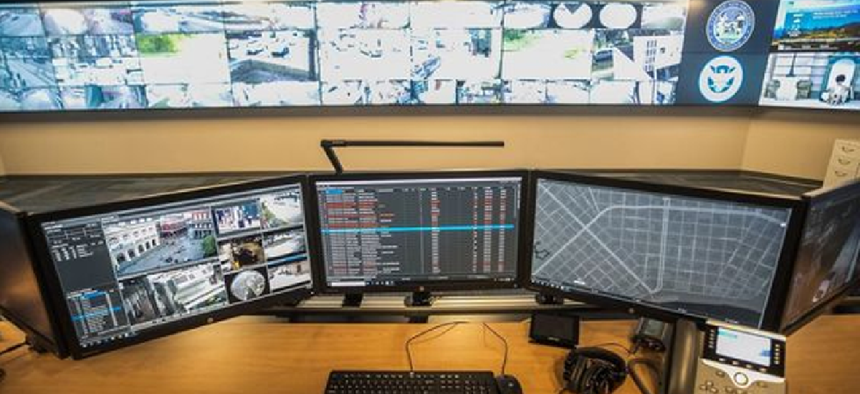New Orleans opens Real Time Crime Monitoring Center


Connecting state and local government leaders
The command center will use video captured from strategically mounted cameras and license plate scanners to give police real-time assistance during violent crimes.
Just ahead of its busy season of hosting football bowl games and its world-famous Mardi Gras celebration, New Orleans opened the Real Time Crime Monitoring Center to capture video footage from strategically mounted cameras and license plate scanners for real-time use during violent crimes.
“We’ve had a couple of great successes so far,” said Aaron Miller, director of the city’s Homeland Security and Emergency Preparedness Office, which oversees the center that opened on Nov. 21, 2017. “Over the first weekend, we were able to … provide video evidence for [police] in a number of fairly significant incidents, everything from armed robberies to assaults.”
During the first weekend of the Mardi Gras celebration, which wrapped up Feb. 13, the center assisted in 17 cases, and in the past few weeks, the video it collected has helped identify suspects and vehicles used in aggravated battery shootings.
The center can also provide real-time information to the city Fire Department, Emergency Medical Service and New Orleans Homeland Security and Emergency Preparedness as well as their public safety partners.
The city connected Motorola’s CommandCentral Aware software to its Motorola PremierOne computer-aided dispatch system to integrate voice, data and video.
According to Motorola, CommandCentral Aware aggregates and integrates streaming video, real-time alerts, advanced data analytics, resource tracking, social media analytics, voice, computer aided dispatch and records information with layered geospatial mapping so command center staff can communicate actionable intelligence via voice and data to field staff.
When a 911 call comes in, a dispatcher enters information about the event, generating an item number that also shows on the screen in the monitoring center. If the incident it is a Part I Unified Crime Reporting offense -- aggravated assault, armed robbery or other life-threatening incident -- CommandCentral Aware’s software-defined triggers automatically spin up the cameras that are near the incident.
“We don’t need to be watching footage and just staring and hoping to get lucky,” Miller said. “We’re letting the software drive us or letting the software be the one to decide where to look and when to look.”
Technicians can also look at cameras near the incident to catch someone fleeing the scene. They relay the information to a dispatcher who alerts officers on the street. “They can make better decisions about either catching perpetrators or making sure that we’re sending the right resources,” he said.
The center uses the same systems that stores video from the city’s in-car and body-worn cameras. “When there is video related to an incident, the video is uploaded to the same place for the same process that an officer’s body camera footage is uploaded, so it’s tagged and associated in the same way,” Miller said. “Those data files are then together in a public-safety-grade storage solution that then allows for all of the appropriate sharing and permissions to happen on the same pathway.”
The main monitoring room where technicians view the footage is highly secure. There are two access control doors personnel must pass through, and the building itself is under internal surveillance. Within the room itself, cameras are positioned to monitor each terminal, and those terminals are restricted through software-defined access, so users can see only the video their permissions allow them. Additionally, users cannot access the video from any terminal outside that room, and they cannot use removable storage devices such as USBs or burn video to discs. “The only place it can go is to the public-safety cloud solution,” Miller said.
What’s more, the software has audit trail capabilities so officials can see what users clicked on and the cameras’ IP addresses.
The center retains footage only long enough to ensure there is no need to archive anything from it. If footage is not downloaded, saved and tagged with a case file, it goes away.
The center is part of a $40 million overall public-safety modernization effort that included rolling out new Wi-Fi-enabled public-safety radios for first responders. The city expects to spend about $2.5 million on the cameras and installation, ultimately putting about 120 license plate readers and 200 to 250 cameras in hotspots citywide -- that’s in addition to city-owned cameras already in place, bringing the total to about 300, Miller said.
In announcing the center’s opening, New Orleans Mayor Mitch Landrieu said he plans to work with the City Council on legislation to get bars and alcohol permit holders to install outward-facing cameras that would feed into the center.
“If you’re in public, you don’t have that expectation of privacy,” Landrieu said in a Best of New Orleans story. “People should conduct themselves accordingly.”




